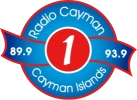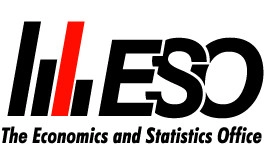ESO
CI Government Q2 2025 Financial Report Gazetted
The Cayman Islands Government’s Quarterly Financial Report for the Six-Month Period Ended 30 June 2025 was published in the Cayman Islands Gazette on Friday, 8 August 2025 as required by law.
The unaudited financial results for the second quarter 2025 show a $194.0 million year-to-date surplus for the core Government and a $201.5 million surplus for the Entire Public Sector (EPS).
Net assets of the Government were $2.6 billion, with overall bank account balances of $494.8 million in cash and deposits.
Surplus
The overall EPS surplus of $201.5 million was $42.1 million, or 26 percent, greater than the projected year-to-date operating surplus of $159.4 million.
This favourable position was due to actual revenues being higher than budgeted by $61.4 million for the period, primarily due to coercive revenues being $53.0 million higher than expected and investment revenues showing a positive variance of $7.3 million.
The higher-than-expected revenues were complemented by lower levels of expenditure in personnel costs, which were $8.8 million less than budgeted, as well as lower spending on supplies and consumables which was $8.2 million less than budgeted.
Year-on-Year Comparison
Comparing year-on-year numbers, the EPS surplus was $14.9 million lower than that achieved for the same period in 2024.
Statutory Authorities and Government-owned Companies’ (SAGCs) results through the second quarter of 2025 showed a negative variance of $5.7 million when compared to the same period in 2024.
Compared to the same period in the prior year, total revenues of Core Government have increased by $51.5 million while total expenses of Core Government have risen by $60.7 million for the comparable period.
Revenues
The first six months of 2025 generated total revenues of $766.3 million, which was $61.4 million more than budgeted expectations and $51.5 million higher than the 2024 year-to-date actual results, mainly due to coercive revenues being $53.0 million higher than budgeted.
The positive variance in Q2 2025 coercive revenues compared to budget can be broken down as follows:
- Other Company Fees – Exempt Companies were $27.6 million higher than the $93.6 million expected budgeted amount for the second quarter due to increased registration. When compared to prior year-to-date performance, the 2025 results were $17.1 million better.
- Partnership Fees exceed budget by $15.3 million owing to higher than anticipated registration in this category. Compared to the prior year actual there is an $8.9 million positive variance.
- Private Fund Fees performed $9.1 million better than the $59.4 million anticipated due to an increase in the volume of funds registered. The current year results for these fees are $6.6 million higher than the actual results for the prior year-to-date performance.
- Stamp Duty – Land Transfers were $10.0 million higher due to greater volumes of property transactions coupled with increasing property values. The 2025 duties of $48.1 million are $2.5 million more than for the comparable period in 2024.
- DITC Penalties and Fines contributed $7.5 million in unbudgeted revenue as fines are charged on breaches of applicable laws. The 2025 fines are $4.7 million more than those received for the same period in 2024.
Notwithstanding the overall favourable results in coercive revenues collected, when compared to the 2025 Budget, there were certain areas that fell short of projected expectations including:
- Other Import Duty amounted to $14.3 million less than anticipated, and $2.0 million less than the prior year-to-date amount.
- DITC Filing Fees were anticipated to commence in 2025 but this was not implemented due to a policy decision resulting in an $8.4 million negative variance against budget in this category.
Total Investment Revenue produced $12.0 million, which was $7.3 million more than anticipated for the six-month period.
Higher cash balances held by the Government have afforded larger values to be placed on deposit and this has increased income earned on investments.
Expenses
Expenses for the first six months of 2025 amounted to $572.3 million. This amount was $27.8 million more than the year-to-date budget of $544.5 million. Compared to the prior year-to-date actuals, expenses for Q2 are $60.7 million higher.
There were some savings against budget in Personnel Costs by $8.8million and Supplies & Consumables by $8.2 million.
However, these savings were offset by higher than budgeted levels of expenditure in Outputs from SAGCs by $12.1 million, Outputs from Non-Governmental Suppliers by $20.3 million, and Transfer Payments by $21.3 million.
Performance of Statutory Authorities and Government Companies
SAGCs recorded a combined net Operating Surplus of $7.5 million for the first six months of 2025; which was $8.5 million more favourable than the budgeted Operating Deficit of $1.0 million.
Based on the most recent information received from SAGCs, this favourable variance is mainly attributed to results being better than expected at the Cayman Islands Monetary Authority, National Roads and Port Authority. These favourable variances were partially offset by the unfavourable performance of the Health Services Authority.
However, the SAGCs overall performance is $5.7 million behind when compared to the prior year-to-date performance.
Cash Position
Cash and Cash Equivalents (including fixed deposits with maturity durations not exceeding 90 days) were $112.5 million and Marketable Securities (comprised solely of fixed deposits with maturity durations exceeding 90 days but not exceeding one year) were $382.3 million, for a total of $494.8 million with respect to bank account balances.
Due to the significant cash balances on-hand, the Government continues to place funds on fixed deposit.
Conclusion
The report’s conclusion noted that while the Second Quarter’s performance has positioned the Government to be optimistic about its performance for 2025, costs will continue to increase as more personnel vacancies are filled and projects come online over the remaining two quarters of 2025.
“These costs will have to be diligently monitored to ensure spending is not incurred unnecessarily. If the planned increases in operating activity occur during the remainder of 2025, the surplus as of 30 June 2025 is expected to be significantly reduced,” the report said.
The Cayman Islands Government’s Unaudited Quarterly Financial Report for the Six-Month Period Ended 30 June 2025 may be found online at:
Latest News
-
Butterfield - US Federal Fund RateBusiness11 December 2025, 05:22 AM
-
Ministry of PLAHI Announces New Partnership Between the National Road Safety Committee and NDC’s AA345 CampaignGovernment11 December 2025, 05:20 AM
-
Health City Celebrates Shomari Scott's Honor at the 2025 CMEx Leadership AwardsHealth11 December 2025, 05:20 AM
-
Police Respond to Thefts of E-Bikes, Two ArrestedPolice/Cou...11 December 2025, 05:13 AM
-
The Cayman Islands Chamber of Commerce Pension Plan held its Annual General MeetingBusiness11 December 2025, 05:08 AM


